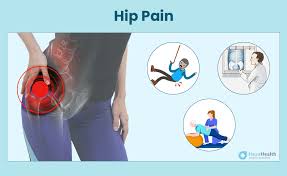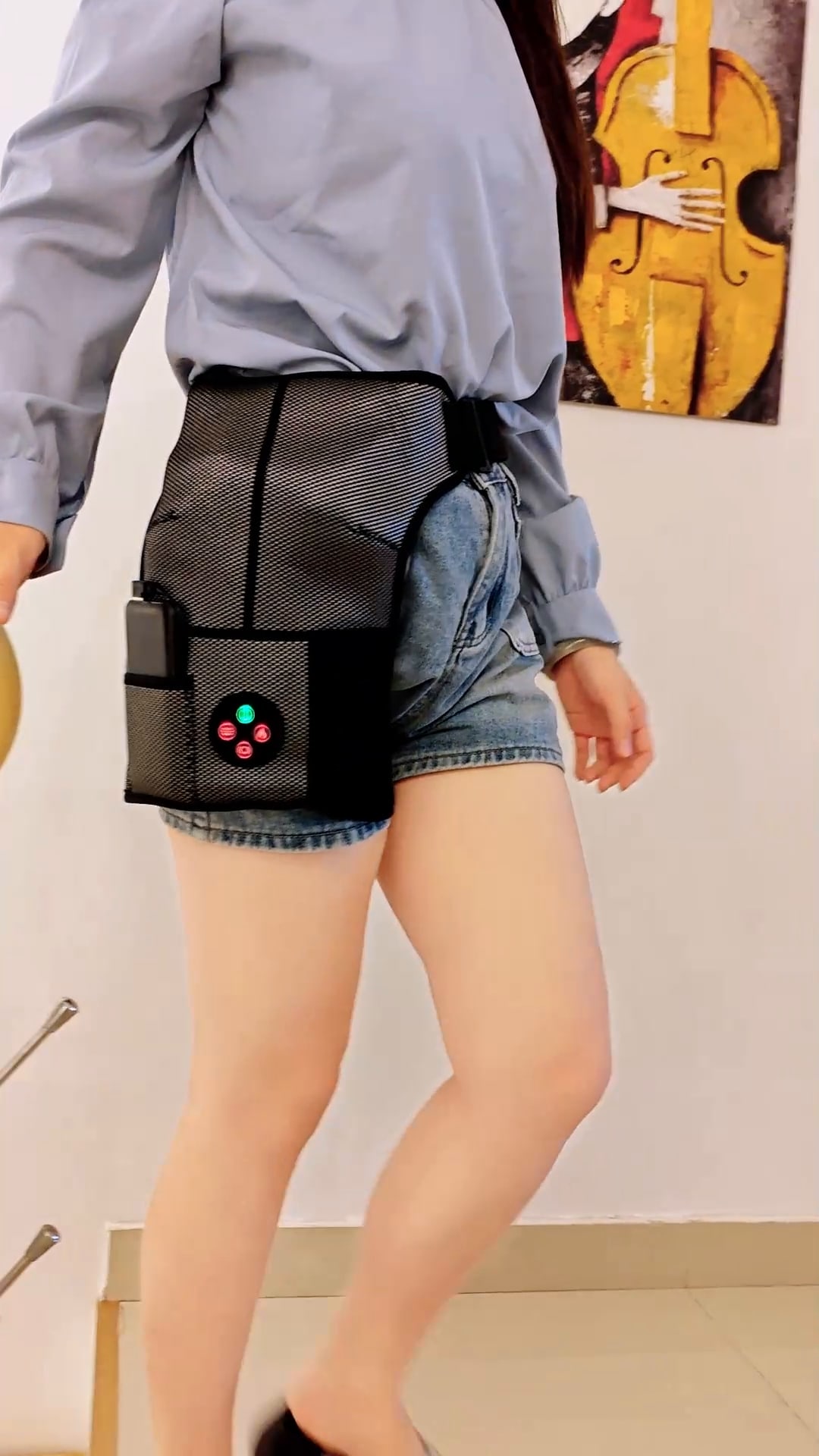buttock massager for Scoliosis Hip Pain: 4-Step Management Guide
- By Grace
- Updated on
Living with chronic hip pain can be a desperate, isolating experience. When that pain is tangled with scoliosis, it adds a layer of complexity that can feel overwhelming. As an office worker, you might notice that long hours of sitting make that nagging ache in your hip and buttock area flare up, turning your workday into a test of endurance. I've seen this pattern countless times; the spinal imbalance from scoliosis creates an uneven load on your pelvis and hips. One side is constantly compressed and overworked while the other is stretched and strained. It's no wonder you're in pain. This isn't just in your head—it's a real, mechanical problem.
The good news is that you are not powerless. Finding relief is about understanding the root cause and exploring a multi-faceted approach. There isn’t a single magic bullet, but rather a combination of strategies that can work together to rebalance your body, manage pain, and restore your quality of life. This guide outlines four distinct approaches, ranging from foundational corrective exercises to advanced self-care tools like a high-quality buttock massager, to help you navigate this challenging journey.

Approach 1: The Schroth Method: Rebalancing Your Body from Within
The first and perhaps most fundamental approach is to address the scoliosis itself. The Schroth Method is a specialized form of physical therapy designed specifically for this purpose. It’s not your average set of exercises; it's a highly personalized program that teaches you how to use corrective rotational breathing and specific postures to de-rotate, elongate, and stabilize your spine in a three-dimensional plane. Think of your spine as a twisted towel; the Schroth method teaches you how to gently untwist it from the inside out.
In my experience, this method is so effective because it targets the source of the asymmetric pressure on your hips. By creating more symmetry in your torso, you naturally reduce the uneven forces that are causing one hip to bear more weight and stress. One of the deep, hidden culprits in this scenario is the psoas muscle, a major hip flexor that connects your spine to your leg. When the spine is imbalanced, the psoas is often chronically tight on one side. While the Schroth method helps correct the overall posture, targeted psoas major massage / psoas massage can also provide significant relief, though it often requires a skilled practitioner to perform correctly.
- How to Perform: This must be done under the guidance of a Schroth-certified physical therapist who will create a custom exercise plan for your specific curve pattern.
- Benefits: It’s a long-term solution that empowers you with the tools to manage your condition, improve posture, reduce pain, and potentially halt the progression of the curve.
- Tips: Consistency is everything. This is a practice you integrate into your daily life. It’s a long, long road, but one that rebuilds your body’s foundation.
Approach 2: Chiropractic Therapy: A Potential Path to Temporary Relief
Chiropractic care is another common path people explore for pain relief. The core idea is that spinal adjustments, or manipulations, can improve joint mobility and nervous system function, thereby reducing pain. For someone with hip pain from scoliosis, a chiropractor might focus on adjusting the sacroiliac (SI) joints and lumbar spine to alleviate some of the immediate pressure and stiffness. Many people find that these adjustments provide a welcome, albeit often temporary, reprieve from their discomfort.
However, it's crucial to approach chiropractic care with a balanced perspective. The feedback is genuinely mixed. While some individuals swear by it for managing their flare-ups, others have reported that the adjustments either didn't help or, in some cases, increased their pain. This is likely because scoliosis is a complex structural issue. An adjustment might provide temporary relief to a stiff joint, but it doesn't correct the underlying muscular imbalances or the spinal curve itself. Therefore, it's best viewed as a potential tool for short-term management rather than a cure.
- How it Works: A licensed chiropractor performs controlled, sudden force to a spinal joint, aiming to improve its range and quality of motion.
- Benefits: Can provide immediate, temporary relief from joint stiffness and associated pain for some individuals.
- Cautions: It’s vital to find a chiropractor experienced with scoliosis. Be transparent about your condition and communicate openly about what feels better or worse. If pain increases, it may not be the right approach for you.
Approach 3: Surgery (Spinal Fusion): The Last Resort for Severe Cases
When scoliosis is severe, progressive, and causing intractable pain or interfering with lung or heart function, surgery may become the only viable option. The most common procedure is spinal fusion, where a surgeon uses rods, screws, and bone grafts to permanently fuse sections of the spine into a straighter, more stable position. This is a major, life-altering decision and is rightly considered a last resort after all conservative treatments have failed.
From a personal account shared with me by a patient, the recovery was arduous, but the result was transformative. After years of debilitating pain that destroyed her ability to work or enjoy life, the surgery finally provided stability and a drastic reduction in pain. It effectively eliminated the progressive, deforming force that was torquing her body and hips. While the idea of surgery is daunting, for those with severe curves (typically over 40-50 degrees), it can be an incredibly effective solution that offers a new lease on life.
- What it Is: A surgical procedure to permanently connect two or more vertebrae, stopping the progression of the curve and stabilizing the spine.
- When It's Considered: Typically for large, progressive curves in adolescents or for adults with severe pain and functional limitation that haven't responded to other treatments.
- The Reality: It involves a significant recovery period and results in a loss of flexibility in the fused portion of the spine. The decision requires extensive consultation with an orthopedic surgeon specializing in spinal deformities.
Approach 4: Daily Management: The Role of Massage and Self-Care
Regardless of which primary path you take, consistent self-care is non-negotiable for managing hip pain. This is where you can take back a degree of control on a daily basis. The muscles around your hips and buttocks—the glutes, the piriformis, the tensor fasciae latae (TFL)—are working overtime to compensate for the spinal imbalance. This leads to trigger points, tightness, and pain. Learning how to relieve buttock muscle pain is a crucial skill. A combination of targeted massage, stretching, and topical aids can make a world of difference.
This is where a modern tool like a high-quality buttock massager becomes invaluable. Manually massaging these deep muscles is difficult and tiring. A well-designed buttock massager, like the KLCOSY hip and shoulder massager, can provide deep, consistent pressure to release tight knots in the gluteal muscles. This can improve blood flow, ease tension, and offer significant relief. For an added boost, you can use it in combination with a good muscle pain relief cream. The best cream for muscle pain often contains counter-irritants like menthol or natural anti-inflammatories like arnica to soothe the area while you work on the tissue. Even a gentle psoas major massage / psoas massage attempt with a specific tool can be beneficial, but be cautious as this muscle is very deep. Always consult a doctor before using any massage device, especially if you are post-surgery.
- How to Perform: Use a buttock massager on the fleshy parts of your glutes, avoiding direct pressure on the hip bone (greater trochanter) or spine. Apply a muscle pain relief cream beforehand for enhanced effect.
- Benefits: Provides targeted, on-demand relief from muscular tightness and pain. Empowers you with an effective at-home solution for daily management and flare-ups.
- Tips: Start with a lower intensity and gradually increase as tolerated. Listen to your body—it should feel like a "good pain" of a muscle releasing, not a sharp, stabbing pain. This regular use of a buttock massager can be a game-changer.

Frequently Asked Questions
Does massage help hip pain?
Absolutely. Massage is one of the most effective non-invasive methods for relieving hip pain, especially when it stems from muscular issues. It works by increasing blood flow to the area, reducing muscle tension and trigger points, releasing tight connective tissues, and promoting overall relaxation. For pain linked to scoliosis, massage of the gluteal muscles and hip rotators can be particularly beneficial as these muscles are often overworked. A targeted buttock massager can be an excellent tool for applying consistent, deep pressure that hands often can't sustain.
How to massage hip joint?
It's important to clarify that you don't directly massage the hip joint itself, as it's a deep ball-and-socket joint covered by layers of muscle. Instead, you massage the muscles that surround and control the joint. You can use your fingers, a foam roller, a massage ball, or an electric buttock massager to work on the gluteus muscles (medius and maximus), the piriformis (deep in the buttock), and the TFL (on the side of the hip). Use circular motions or sustained pressure on tight spots. The goal is to release the tension in these supporting muscles to allow the joint to move more freely and with less pain.
How to massage hip bursitis?
Massaging hip bursitis requires caution. Bursitis is the inflammation of a bursa, a small fluid-filled sac that cushions the bone. The most common type is trochanteric bursitis, located on the outer point of the hip. Direct, aggressive massage on the inflamed bursa can make the inflammation worse. Instead, the focus should be on gently massaging the surrounding muscles—the glutes and the IT band—to reduce the tension that is irritating the bursa. Avoid direct pressure on the point of maximum tenderness. Applying ice after a gentle massage can also help reduce inflammation. It is really, really important to consult a doctor or physical therapist for guidance if you suspect bursitis.
Finding your way out of chronic hip pain from scoliosis is a marathon, not a sprint. It requires a combination of professional guidance to address the structural cause and diligent self-care to manage the daily symptoms. Whether it’s rebalancing your body with the Schroth method or finding daily relief with a powerful buttock massager and the right muscle pain relief cream, you have options. Listen to your body, seek expert advice, and don't give up hope. You can reclaim your comfort and your life.




